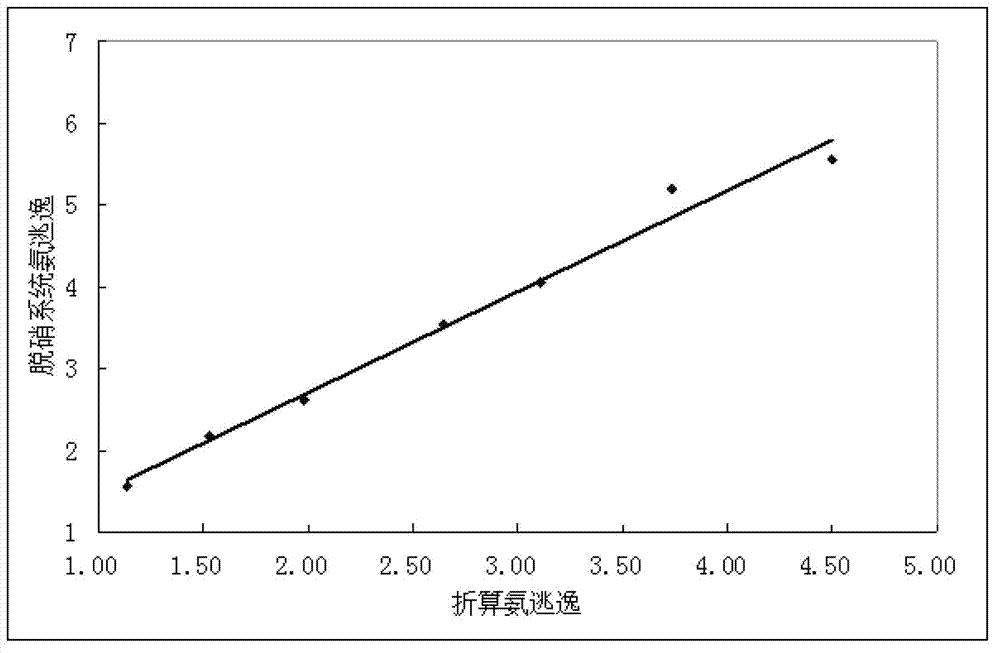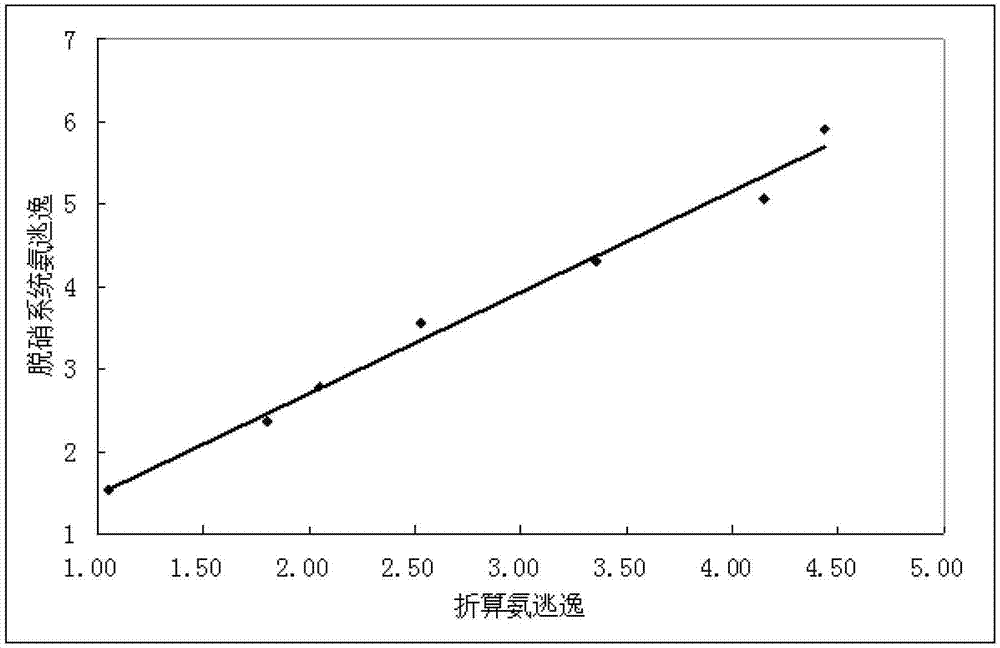Method for detecting ammonia escape of flue gas denitrification system
A detection method and ammonia escape technology are applied in the field of flue gas denitrification of coal-fired boilers, which can solve problems such as affecting the stability of monitoring results and the inability of analyzers to work normally.
- Summary
- Abstract
- Description
- Claims
- Application Information
AI Technical Summary
Problems solved by technology
Method used
Image
Examples
Embodiment 1
[0079] NH to be purchased 4 + The standard solution was diluted and prepared to obtain standard solutions with a mass concentration of 0.2mg / L, 1.0mg / L, 2.0mg / L, 4.0mg / L and 10.0mg / L, and the above series of concentrations of NH 4 + The standard solution was detected by ion chromatography, the inhibition current detected by ion chromatography was 59mA, the quantitative loop volume was 10μL, the separation column was CS12A-4×250mm cation separation column, the elution method was isocratic elution, and the flow rate of the eluent was 1.0mL / min, the column temperature is 30°C, the cell temperature is 35°C, and the column pressure is 1200psi;
[0080] The standard solution of each concentration was detected in parallel 3 times to obtain the corresponding peak areas of the standard solutions of each concentration, and then the concentration-peak area curve was fitted by the least squares method for calibration to obtain the NH 4 + standard curve.
Embodiment 2
[0082] Weigh 2.0000g of fly ash samples to be tested under 7 working conditions respectively, place them in a beaker, and then add 40g of deionized water to it to obtain a fly ash sample solution;
[0083] A hydrochloric acid solution with a mass fraction of 20% is placed in a potentiometric titrator, and then the pH value of the fly ash sample solution is controlled between 6.0 and 6.8 with the potentiometric titrator, and the sample solution is stirred at the same time;
[0084] After stirring for 2 hours, let the sample solution stand still, and continue to use the potentiometric titrator to control the pH value of the solution between 6.0 and 6.8 during the stirring process;
[0085] The supernatant after standing still was placed in an ion chromatograph for detection, the inhibition current detected by ion chromatography was 59 mA, the volume of the quantitative loop was 10 μL, the separation column was CS12A-4×250mm cation separation column, and the elution method was iso...
Embodiment 3
[0092] Weigh 1.0000g of the fly ash sample to be tested under working condition 1, place it in a beaker, and then add 20g of deionized water to it to obtain a fly ash sample solution;
[0093] A hydrochloric acid solution with a mass fraction of 20% was placed in a potentiometric titrator, and then the pH value of the fly ash sample solution was controlled at 6.0 with a potentiometric titrator, while the sample solution was stirred;
[0094] After stirring for 2 hours, let the sample solution stand still, and continue to use the potentiometric titrator to control the pH value of the solution between 6.0 and 6.8 during the stirring process;
[0095]Put the supernatant after standing still in an ion chromatograph for detection, the inhibition current detected by ion chromatography is 59mA, the quantitative loop volume is 10μL, the separation column is CS12A-4×250mm cation separation column, and the elution method is isocratic For elution, the eluent flow rate is 1.0mL / min, the c...
PUM
 Login to View More
Login to View More Abstract
Description
Claims
Application Information
 Login to View More
Login to View More - R&D
- Intellectual Property
- Life Sciences
- Materials
- Tech Scout
- Unparalleled Data Quality
- Higher Quality Content
- 60% Fewer Hallucinations
Browse by: Latest US Patents, China's latest patents, Technical Efficacy Thesaurus, Application Domain, Technology Topic, Popular Technical Reports.
© 2025 PatSnap. All rights reserved.Legal|Privacy policy|Modern Slavery Act Transparency Statement|Sitemap|About US| Contact US: help@patsnap.com



